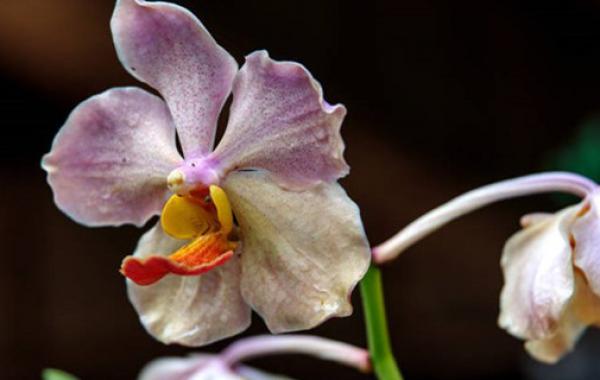How to manage the magnolia in summer?
Clivia is relatively easy to cultivate plants, many literati are very like, to the summer, must pay attention to conservation, then, how to manage clivia in summer.
Clivia cooling in summer
Shade cooling: summer season to shade, and, spray 3^-4 times a day, 2-3 days irrigation once permeable water. Sand cooling: Put a tray under the flowerpot, which is filled with sand. Sprinkle water on the sand 3-4 times a day. The water contained in the sand absorbs heat from the air as it evaporates, which can achieve the purpose of cooling. Pool cooling: Place a piece of hardwood or concrete prefabricated board on top of a tank of cold water, and place the flowerpot on the board or concrete board. Water evaporates continuously when heated, which can increase the humidity of the air and reduce the temperature.
Clivia
Clivia control light
Midsummer season, let Clivia see 2 hours a day for the ideal morning, other time shading can also be. If there is no condition to see the morning light, it is also possible to treat it with a semi-shading method, that is, put the flowerpot under the shade or grape rack. Such as indoor must keep a distance from the positive sunny window, and use white curtains to shade, so that Clivia accept "flowers up to light", otherwise direct sunlight is easy to suffer from sunburn. In addition, no matter which method is used to control the light, the sunny side should be adjusted once every 10 days or so to ensure that the leaves grow regularly.
Clivia
Clivia is properly watered
Although the amount of watering in summer is more than that in other seasons, it is still necessary to adhere to the principle of not watering until it is dry and watering thoroughly once it is watered. It is not allowed to irrigate when the topsoil is dry. Otherwise, the pot soil will be in a state of mud for a long time, and it is easy to soak the fleshy roots and cause yellow leaves. Especially in poor ventilation conditions to water less.
Clivia
Clivia rotted roots and solutions
Clivia can sometimes appear rotten root phenomenon. Mainly due to high temperature, excessive watering, application of concentrated fertilizer or undecomposed culture soil bacteria and so on. Rotten roots generally have two kinds of situations: one is that most of the roots are still good, only a part of the roots are rotten; the other is that most or all of the roots are rotten. For the former case, the rescue method is: immediately knock out the rotten roots from the basin after discovering them, carefully remove the attached soil, rinse the roots with clean water, then cut off the rotten roots with a clean sharp blade, and then apply 0.1 potassium permanganate solution to the rotten roots, or wrap the leaves with toilet paper, place them under weak sunlight for half an hour, and then plant them in the passing matrix by using ultraviolet rays. After planting, cover with transparent plastic bag and put it in semi-shade, water less and keep the pot soil slightly moist. At the same time, every 5-7 days, spray 0.2% potassium dihydrogen phosphate aqueous solution on the leaves to increase nutrients and promote rooting.
After about two weeks, new roots can grow, at which time remove the bag and gradually transition to normal maintenance. For the latter case, the rescue method is: first wash the stem base with water, then cut off the rotten part horizontally with a sharp knife (the incision is required to be dry and smooth), then apply sulfur powder or charcoal powder on the incision to prevent wound infection, put it in a cool and ventilated place, plant it in a plain sand basin after the incision surface is slightly dry, pour water once two days later, keep the basin soil moderately moist, and avoid fertilization. Under the temperature of 20-25℃, new roots will grow around the incision after about 10 days, and can be transplanted into new culture soil pots after about 45 days, and gradually transferred to normal maintenance.
Stop Fertilizing with Clivia
When the indoor temperature is higher than 25℃, it is necessary to stop fertilizing. Because the roots don't absorb any more fertilizer. On the contrary, if fertilizer ferments in the soil to produce high temperature, it is easy to burn the fleshy roots. Such as spring fertilization more, after summer can also be replaced from the upper pot soil 1/2, to be replaced after the beginning of autumn.
Clivia summer management methods are introduced here, I hope to love the cultivation of Clivia friends help, these methods may wish to try in the process of planting, I believe everyone will be very fruitful.
Related
- Is the orchid suitable for indoor use? Is it good for the body?
- How to prevent the empty root of orchids?
- What to do after the crab claw orchid is withered?
- Why are the leaves of orchids always yellow? Fertilizing and watering.
- Can the root of the gentleman orchid be saved if it is rotten?
- Diagnosis and treatment of cotton-blowing beetle insects in Cymbidium
- There is a way for a gentleman's orchid to rot.
- What is the most suitable temperature and humidity for the orchid?
- How to raise a gentleman's orchid? Cultivation techniques of Cymbidium
- How to prepare the nutritive soil for the cultivation of Cymbidium



